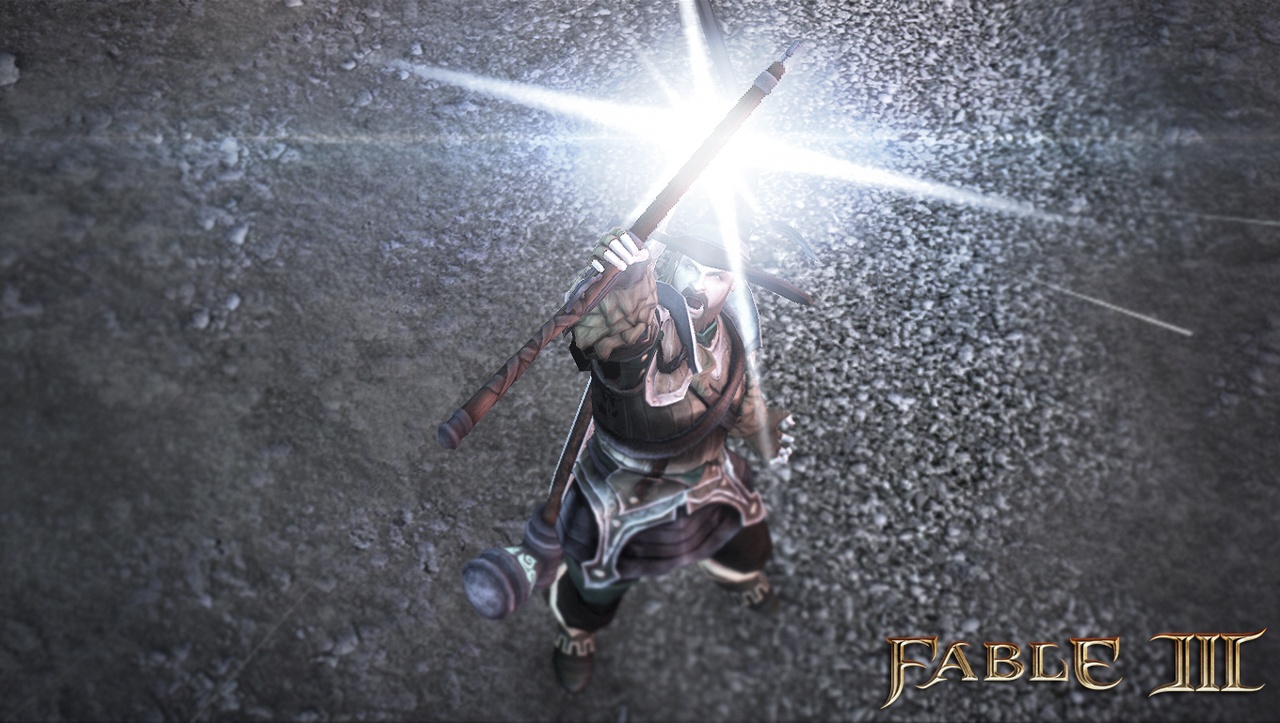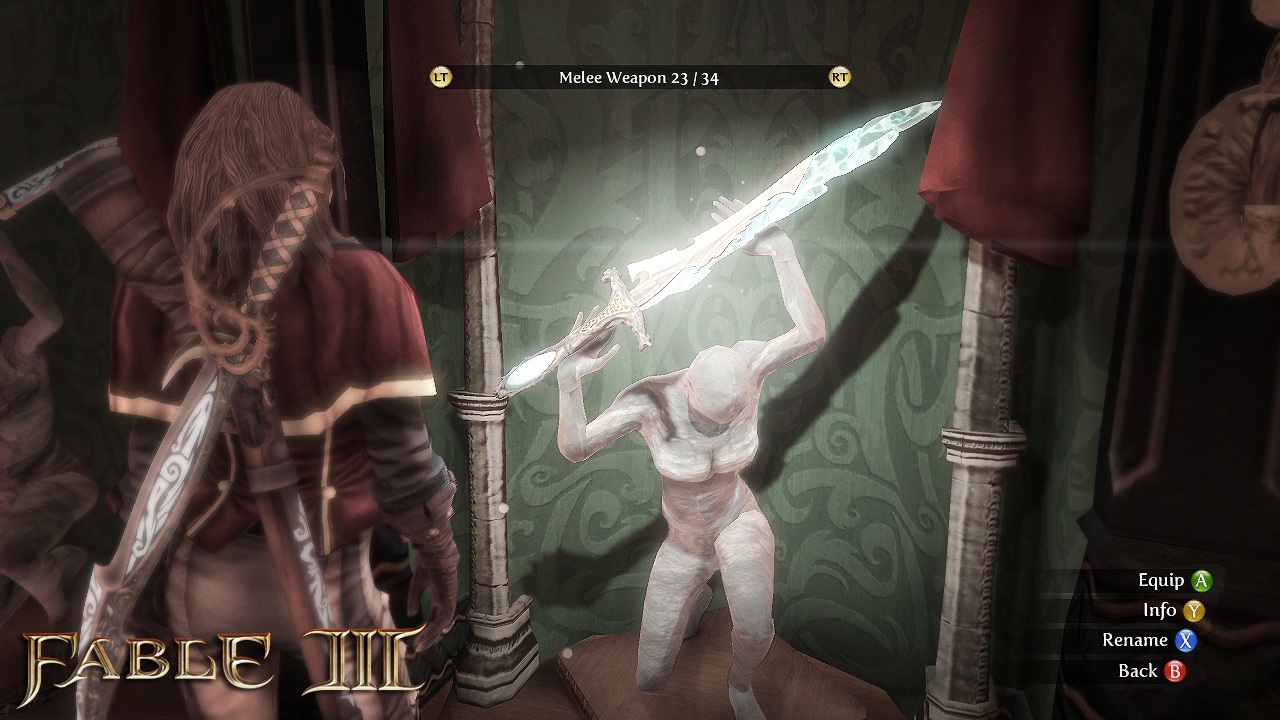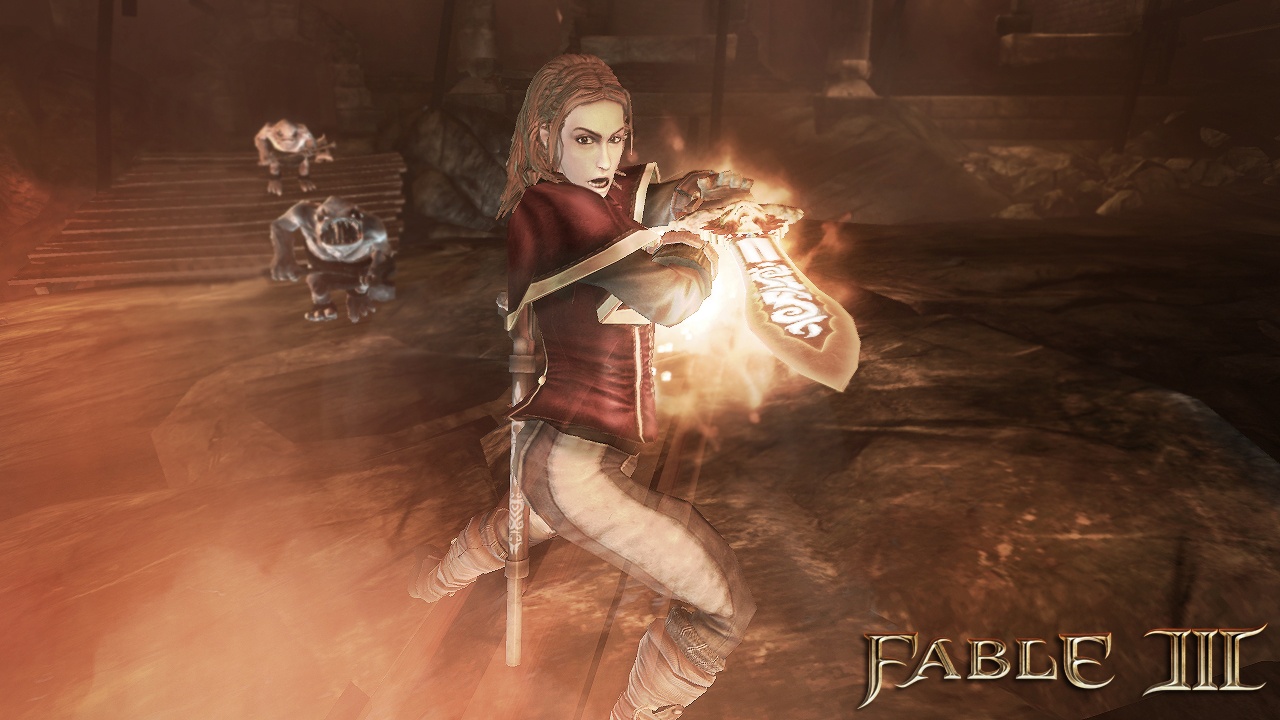Fable III Hands-On
The Road to Rule is paved with important choices, streamlined gameplay, and refined visuals.
Whatever soul-searching design rethinks Fable III has in store, another Fable means another Hero's journey. Once again, you are a youth of heroic descent called on to fulfil your potential and save the historical-fantasy land of Albion. This time, though, you're no tragic pauper orphan but a dashing royal orphan, sibling to the ruthless King Logan. This makes your first choice one between being a dapper prince and frilly princess, their character models the first promising sign of the visual refinement that's taken place between Fables II and III. The decision is your first of many in the early hours of a game keen on binary choices--some crucial, some instructive, and some symbolic.
Fallout 4 Next Gen Update Comparison Stellar Blade - Hard Mode No Damage Abaddon Boss Gameplay Stellar Blade - (Almost) All Outfits Granblue Fantasy: Relink - New Content Trailer Modern Warfare III - New Season 3 Reloaded Modern Warfare Zombies Update River City Girls 2 - New Playable Characters DLC Reveal!! That Time I Got Reincarnated as a Slime ISEKAI Chronicles – Official Announcement Trailer MEGATON MUSASHI W: WIRED – Official OP “MUSASHI English Ver.” Trailer Stellar Blade - Official Launch Trailer | PS5 Games Gothic 1 Remake | Official Collector's Edition Trailer SaGa Emerald Beyond – Official Launch Trailer Paper Mario: The Thousand-Year Door – Official Switch Overview Trailer
Please enter your date of birth to view this video
By clicking 'enter', you agree to GameSpot's
Terms of Use and Privacy Policy
Your second choice, having been awoken by your John Cleese-voiced butler, Jasper, is between an ornate outfit and a practical one. Then, after a stroll with your border collie through the palace gardens--greeted on all sides by guards and well-wishers--the breadcrumb trail brings you to your winsome royal consort. Your third choice has you decide whether to hug or kiss. Is anything more ominous than an idyllic prologue? King Logan is in a bad mood. Out in the city, a factory worker has been executed. Everyone in the castle is upset with the king; his lowly subjects are no happier. The disgruntled kitchen staff members need to be reassured or told off, as you see fit. One of the many civilians waiting to plead his case with Logan must be supported or mocked. Sir Walter, once the loyal friend of your father and now your combat trainer, knows which way the wind is blowing. When everything inevitably goes south, and you're branded a traitor by your paranoid brother, it's Sir Walter that flees the palace with you, along with Jasper and the dog.
In the palace and beyond, in the bat-infested caves that enabled our escape, and in snowy Mistpeak, our hero's first destination, the realm of Albion has been beautified--or visually refined, at least. Though the characters and the environments are still stylised rather than photo-realistic, the artistic style leans more toward realism than the faintly cartoony, caricatured look of the previous game--although Fable's gently quirky humour is still firmly in place. The character designs are more appealing for it, as mentioned; Peter Molyneux would say the princess looks like less of a "Russian shot-putter."

The world, says Sir Walter, has been too long without a Hero, and it will take a Hero to lead a revolution against Logan. The Hero's journey is suddenly clear: unite the disparate peoples of Albion against the king. That journey is not just clear, but it's also neatly symbolised in the Road to Rule: a long, misty path blocked by gateways and leading back to the castle. The road, visited in visions and presided over by Theresa, the blind seer, serves as a progress indicator and talent tree in one. The gates--metaphors for levels--are unlocked by gaining powerful allies. Along the path, between gates, are treasure chests containing upgrades including ranged, melee, and magical power boosts. There are also new spells and new noncombat ability bundles, such as the landlord pack and marriage pack. These are unlocked with Guild seals--points earned in battle and by successfully interacting with the populace on your travels. The Road to Rule is one means by which Fable III strips out immersion-sapping stats and talent trees. Another is the barely-there heads-up display, which is little more than your tally of Guild seals popping up from time to time. And another is the Sanctuary, a gameworld metaphor in the same manner as the Road, but this time standing in for your inventory menus and world map.
A cobwebby, circular chamber with a tabletop model of the kingdom at its centre, the magical Sanctuary is part of your heroic heritage. The start button lets you instantly flip between the game's "real" world and the Sanctuary, where Jasper waits patiently alongside your world map, your armoury, your walk-in wardrobe, and your collection of trophies. The map enables fast travel around Albion (and presumably beyond, later in the game), while the armoury and wardrobe enable changes of gear. The armoury contains magical living weapons, which change to reflect how they are used, among them a sword that can get longer and sharper with use and a hammer that can grow heavier. You can give a name to your visibly evolving weapon, if you like; in the course of the demo, our Mr. Stabby appeared to develop a discreet runic design along its blade.

Another room in the Sanctuary provides access to two-person cooperative play, though this wasn't available for our preview. According to lead designer Josh Atkins, that co-op mode allows two players all but free roam of one of their gameworlds, each as his or her own Hero. The two heroes won't be tethered, restricted to the same screen, but both will have to stay in the same wider region to maintain co-op mode. The second player also gets paid, making co-op "one of the most lucrative jobs you can have" and a "pretty great way to make money and level up." And, if you're playing together for less mercenary reasons (or you fancy the 10G achievement), you can marry a co-op partner over Xbox Live as you would a non-player character. For the wedding enthusiast, Fable III even lets you pick a venue and a budget for the big day.
As with marriage, interactions with your co-op partner and with the citizens of Albion have much in common. You can extend most of the same gestures to each with Fable III's much-touted, touch-based system of expressions. A pull of the left trigger has you hold hands with them, or you can tap the A button to enter a kind of interaction mode, offering the relevant choices. You can shake hands, for instance, dance together, or give money. As in Fable II, expressions can be extended--successfully pulling off a basic handshake turns it into a knuckle bump. A similar mechanic allows interaction with your dog, offering options to pet it, play fetch, or tell it off.
As in the previous Fable, your dog can sniff out treasure chests and dig spots, as well as attack enemies once you've downed them. This and much else of Fable III's combat system feel familiar. The biggest change--and a welcome one--is the absence of coloured experience orbs left behind by your victims. Spells still come in area-of-effect and directed forms; melee attacking still offers a charged flourish blow, with some nice animations. In the few hours we had to play, enemy variety wasn't vast. We battled wolves, bats, mercenaries, and skeletal hollow men, with a cigar-chomping mercenary leader as the most plot-significant fight. Here, dodging attacks and mixing up long-range and up-close combat was as effective as in the previous game.

There was a wider variety of environments than enemies, including the impoverished mountain settlement in snowy Mistpeak Valley, scored with plaintive violin music; Bowerstone's fetid sewers; cavernous underground ruins; and cheery, rustic Brightwall village. In the latter, we encountered Fable III's professions for the first time, among them lute hero (a rhythm minigame, what else) and pie maker. These work along the same lines as Fable II's professions: chain together successful attempts to grow your money-making multiplier.
Peter Molyneux isn't without his critics, but he might be one of the harshest and has been keen to expound the shortcomings of Fable III's predecessor. Changes have been made accordingly--tweaks in some cases, overhauls in others--and the results, from the first few hours of play, are promising. In late October, we'll see whether Fable III is, this time, the game he meant to make.
Got a news tip or want to contact us directly? Email news@gamespot.com
Join the conversation